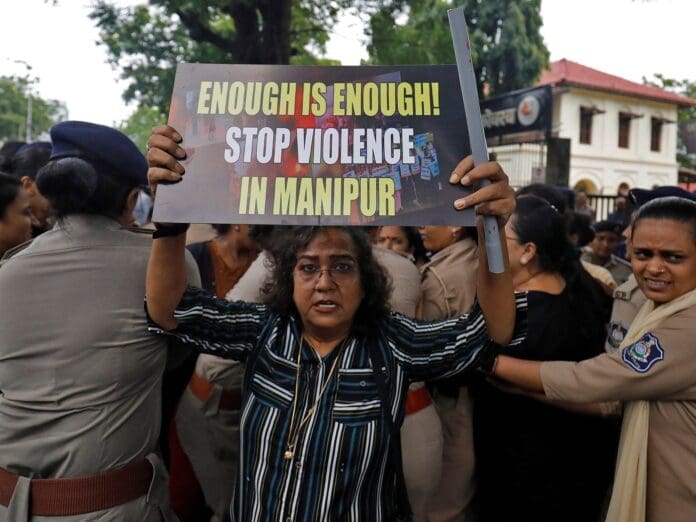Churachandpur, India – In early June, two individuals were seen working on laptops inside a partially built structure in the Churachandpur district of Manipur state in northeastern India. The region had been engulfed in an ethnic conflict between the Kuki-Zo and Meitei people since May 3. In an effort to stay connected, the Kuki-Zo community paid hackers to provide them with internet access, as the state government had blocked internet access across Manipur. The internet was important to the community not only for practical purposes, such as students filling out online forms, but also as a means to share information with others and shape the narrative about the conflict happening in Manipur. This conflict has gained significant traction on social media platforms like X, Instagram, and Facebook, with individuals from both sides sharing their perspectives, disinformation, and requests for solidarity. The conflict, which has resulted in numerous casualties, is unique in that it is likely the first armed conflict in India to be heavily fought on social media as well. Social media has played a key role in spreading narratives from both communities and has even brought attention to incidents of violence that later made it into mainstream news. However, this online battle has also contributed to the hostilities and disinformation campaigns have added to the tensions. Researchers have noticed distinct patterns in the creation and growth of social media accounts associated with the Kuki and Meitei communities during the conflict. While the conflict has eased in recent days, social media continues to play a significant role in shaping public opinion and perpetuating the narratives of both sides.
Home The Conflict Social Media: The Battleground for Narrative Wars in India’s Conflict-ridden Manipur
